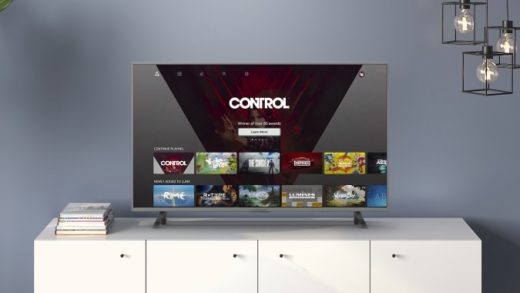Facebook’s cloud gaming service hits iOS devices as a web app
A closer look at Luna, Amazon’s cloud gaming service
Spoiler: It’s not a native iOS app.

Luna is what happens when you take the subscription model of Prime Video, mash it up with Twitch, plug that into Amazon Web Services, and wrap it all in an Alexa-powered gamepad. In short, Luna is Amazon’s cloud gaming platform, and the latest rival to Microsoft’s xCloud and Google’s Stadia. It goes live in early access in October, subscriptions start at $5.99 a month, and players in the US can sign up today to receive an invite via Amazon.
Amazon revealed Luna and its low-latency gamepad today during the company’s annual hardware event. We spoke with platform executives — and briefly went hands-on with Luna itself — ahead of this morning’s announcement and gathered a handful of details about the platform, some of which have been underplayed or overlooked in Amazon’s own information dump.
First up, this whole “Android coming soon” business.
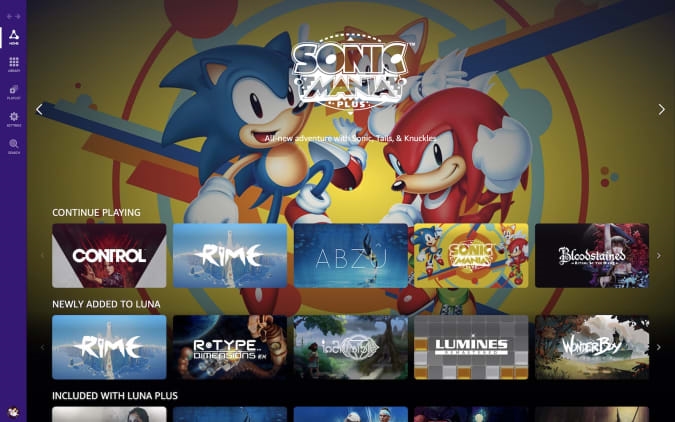
Android availability
Initially, Luna will launch in early access on Fire TV, PC, Mac and iOS devices, including iPhones and iPads. Notably, it won’t be available on Android right away. The Android version should go live within “weeks” of the early access launch, according to Luna head Marc Whitten.
Whitten and other Luna executives don’t attribute the temporary iOS exclusivity to Amazon’s mysterious sweetheart deal with Apple, which allows Prime Video to sell media directly on the App Store without giving Apple 30 percent of its sales. The 30 percent cut is standard for essentially every other paid program on the iOS marketplace, and it’s one of the main reasons Epic Games is suing Apple this year.
Executives also don’t attribute the iOS-first launch to xCloud’s provisional exclusivity on Android platforms. Microsoft’s game-streaming platform, xCloud, isn’t available on iOS because of that 30 percent fee and the fact that Apple “consistently treats gaming apps differently, applying more lenient rules to non-gaming apps,” according to Microsoft.
With Luna, Amazon has discovered another way to circumvent Apple’s App Store fees. Luna is a progressive web application (PWA), which means it’s actually a browser-based program masquerading as a native iOS app. You’ll download the PWA from the Luna website, and the resulting icon on your iPhone’s home screen will function like a shortcut to Amazon’s cloud gaming portal on the web.
As a PWA, Luna is not involved in the App Store at all.
“Just to be super transparent, on iOS, it is through the browser,” Whitten said. “So it’s not a native app in the App Store.”
Epic tried something similar when it sold Fortnite outside of Google Play starting in 2018. For 18 months, the only way for Android users to play Fortnite was to visit the game’s website and download a proprietary launcher from there, or get it through the Samsung-only app store. It was an inelegant solution, and in April of this year, Epic reluctantly added Fortnite to Google Play, accepting the 30 percent fee on all transactions.
At the time, Epic told The Verge, “Google puts software downloadable outside of Google Play at a disadvantage, through technical and business measures such as scary, repetitive security pop-ups for downloaded and updated software, restrictive manufacturer and carrier agreements and dealings, Google public relations characterizing third party software sources as malware, and new efforts such as Google Play Protect to outright block software obtained outside the Google Play store.”
Epic didn’t even attempt to launch Fortnite outside of the App Store ecosystem, citing Apple’s ulta-restrictive policies on third-party marketplaces and its monopolistic control of the iOS platform. Both Epic and Microsoft are aware of the existence of PWA — Microsoft and Google are even collaborating on a project to improve PWA experiences on the Play Store — but they’ve been unwilling or unable to take this route for their mobile gaming services.
And honestly, that’s not surprising. As the Fortnite experiment demonstrated, both Epic and Microsoft have faced regular roadblocks from Apple and Google, even when attempting to operate outside of the App or Play stores. On September 11th, Apple revised its App Store guidelines in a show of deference to game-streaming services like xCloud, but even these new rules are impractical. They require users to download a container for each game they want to play individually from the App Store, even when attempting to access them through a streaming service like xCloud. This mandate doesn’t apply to Luna.
Microsoft responded to the rule change that same day, saying, “This remains a bad experience for customers.” xCloud still isn’t on iOS, and Fortnite is no longer available on the App Store or Google Play as Epic is embroiled in lawsuits with Apple and Google.
With the Luna PWA, Amazon is once again sidestepping a hurdle that has proven insurmountable for companies like Microsoft and Epic.
“We worked with the Safari team to ensure that some of the things that weren’t there are there, and that allowed us to kind of get to where we are today,” Luna head of engineering and technology George Tsipolitis said.
It’s unclear if Luna will remain a PWA after its stint in early access, or if it will eventually join the app stores under the standard 30 percent fee.
“We’ll continue working with Apple,” Whitten said. “We’d love to do a native experience. They’re evaluating what their policies are there, they keep talking about them. And when we can come up with a good experience there, we’ll ship that one, too.”
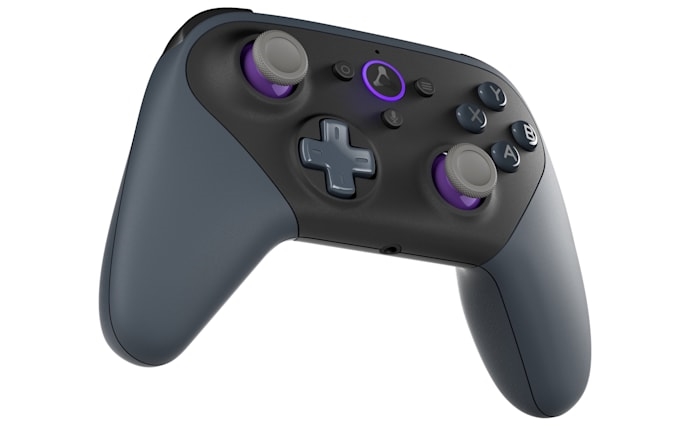
Pricing
Luna will cost $5.99 — at least — in early access. That price unlocks access to Luna+, the baseline channel that will feature a mix of games, including Resident Evil 7, Control, Tacoma, Rez Infinite, Metro Exodus, The Sexy Brutale, Overcooked! 2 and others. Not all of the titles listed up there will be available on day one, but they’re all on the early access docket.
Luna will have more channels with curated content, each available at an additional, as-yet-unknown cost. The first confirmed channel comes from Ubisoft, and will include a broad selection of games from the publisher’s catalog, plus same-day releases of upcoming titles including Far Cry 6, Assassin’s Creed Valhalla and Immortals Fenyx Rising.
Amazon is aiming to have about 100 games available during the early beta period, spread between Luna+ and the Ubisoft channel.
“So more than Stadia, less than Game Pass,” Luna business development manager Lisa Schwenke said. Microsoft recently integrated xCloud into its Game Pass Ultimate subscription service and offers more than 150 streamable titles, while Stadia has about 90, some of which are purchased individually. Schwenke continued, “The goal is to continue to have something for everyone, see what customers are enjoying and try to bring more of that. So definitely starting out a little bit smaller during early access, I think there’ll be about 50 titles in our Luna Plus channel and about 50 in the Ubisoft channel, and just growing that over time consistently.”
The channeled approach to game streaming was borrowed from Amazon’s Prime Video experience, which offers certain stations as paid additions. That said, Luna will evolve as early access carries on and the feedback rolls in.
“You may even see other types of channels like a genre-based channel,” said Marc Whitten, Amazon’s head of Luna. “Or other ways to think about specific pieces of content that might be very attractive to a certain set of customers.”
Amazon specifies that $5.99 a month is the price of a Luna+ subscription during early access, so this base price is likely to change with the launch of Luna 1.0.
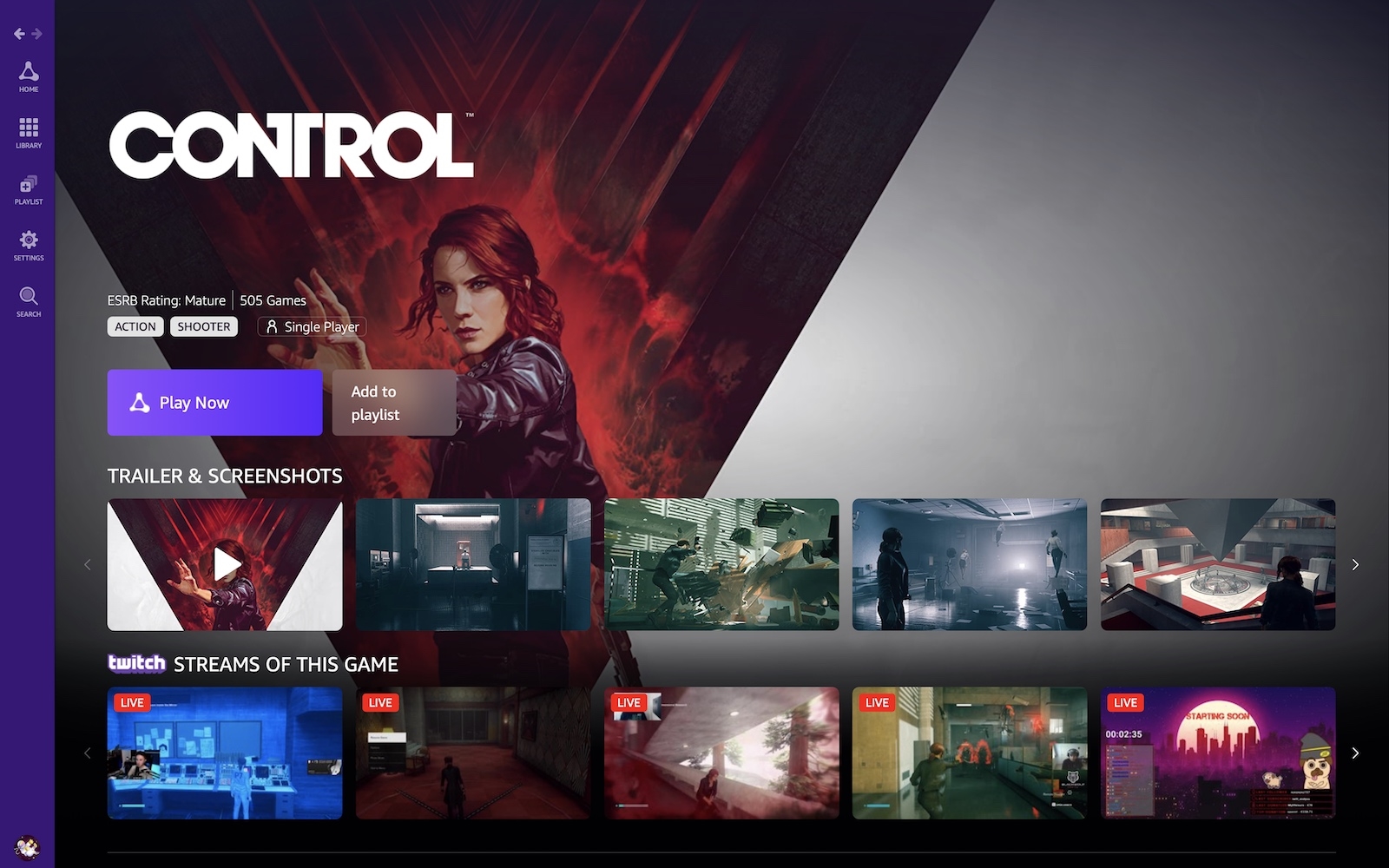
Twitch integration and tech specs
Prime Video isn’t the only online media empire run by Amazon, and it isn’t the only source of inspiration for Luna’s operations. Amazon also owns Twitch, the No. 1 streaming site for video game fans around the globe, consistently and easily outpacing YouTube and Facebook when it comes to live video viewership. Luna will be tied to Twitch from day one of early access: On Luna, individual game pages will showcase related Twitch streams, and on Twitch, if a streamer is playing a Luna title, viewers will be able to click a link and play that game themselves, as long as they’re a Luna subscriber.
These social features are similar to ones that Google proposed early on for Stadia and YouTube, but like many of its bold cloud gaming promises, they’ve yet to materialize.
Amazon is targeting a resolution of 4K and 60fps, though initially in early access, Luna will support up to 1080p and 60fps, according to Tsipolitis.
“Going to 4K, coming soon,” he said. “And from a 4K offering, it’s going to be true native 4K, and that’s going to be also working with the game developers. However they want to support that from an FPS standpoint, we’re going to support that. …From a customer perspective, they’ll be able to select, obviously, the fidelity that they prefer for their in-home network, 1080p or 4K, because that has different network requirements and bandwidth requirements.”
For 1080p gaming, Amazon recommends internet speeds of at least 10 Mbps, and for 4K, it’s 35 Mbps.
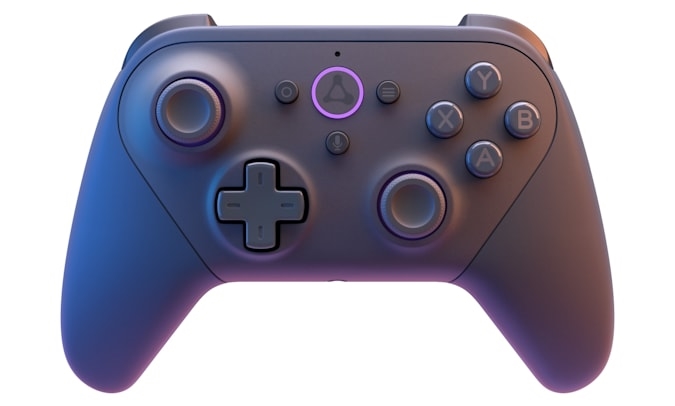
Hands-on (including the controller)
Sure, but how does it play? I spent about 45 minutes with Luna on three devices — Fire TV, Mac and iOS — while two developers looked on via an Amazon Chime call and offered tips. And, in this brief testing period, Luna worked just fine. I started on Fire TV and was able to boot up the beefiest game in the store, Control, in a matter of seconds. It stuttered a bit throughout the opening scenes, but not enough to interrupt the cinematic flow. More often than not, gameplay was smooth, and none of the network interruptions that did appear were significant enough to break my experience. I felt like I could happily play the entire game on Fire TV.
Or Mac, or iOS. One of Luna’s stand-out features is its ability to seamlessly transition a game session among screens, and this bit of cloud tech functioned perfectly. I simply stopped playing Control on Fire TV and opened a link to the game on Luna on my MacBook Pro; it loaded precisely where I left off, freeing up the television. The same was true for iOS — I tapped the PWA icon to open Luna and picked up my in-progress game with minimal fuss.
This feature will be particularly handy considering Luna supports two simultaneous players per account, so in busy households, some screen swapping will certainly be in order.
All of this was made easier by Amazon’s Luna controller, which will launch in early access for $49.99. It’s a basic gamepad with faint, braille-like texturing on the grips, built-in Alexa functionality, and low-latency software called Cloud Direct. It’s similar to Google’s Stadia controller technology — as Tsipolitis explained it, the Luna controller communicates directly with the game in the cloud, rather than using a screen as a waystation, like Bluetooth gamepads do. This minimizes latency by 20 to 30 milliseconds, he said. Luna supports standard Bluetooth controllers as well, though of course it will “play best” with Amazon’s gamepad, according to executives.
Cloud Direct also means you don’t have to pair the gamepad to each new device every time you want to swap screens. Since the controller is following the software in the cloud, it simply transitions to a new screen whenever the game itself does, automatically pairing with that new piece of hardware. I was also able to boot up Control on Fire TV by holding down the small microphone button in the middle of the gamepad and saying, “Alexa, play Control.”
Out of the existing cloud gaming services, I’ve spent the most time with xCloud, mainly because it offers a consistent streaming experience and a much broader library than Stadia. From a technical standpoint, Luna appeared to keep pace with xCloud. Going forward, it just needs to do the same with its library.
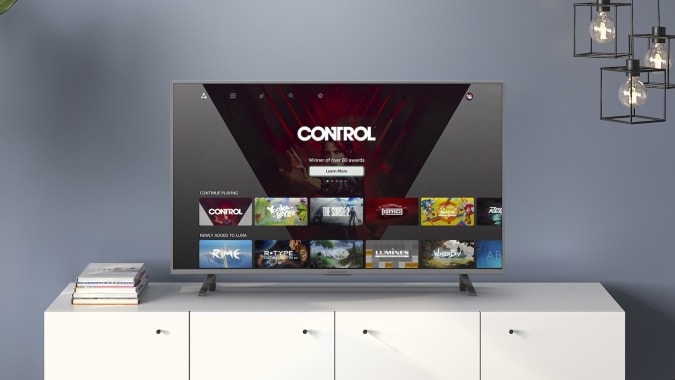
Competition
Luna is built on the back of Amazon Web Services, one of just a few global networks broad enough to support high-fidelity cloud gaming. Microsoft owns another, as does Google, but few other companies have the resources to build and run a proprietary cloud gaming service. As the leaders in this space emerge, success is no longer about simply streaming a title to a player’s phone or TV. It’s about the games themselves.
Stadia has consistently disappointed players since its launch in November 2019. Not because the service doesn’t work, necessarily, but because it doesn’t have the software to keep things interesting and Google has failed to properly communicate with even the most dedicated players. Meanwhile, xCloud is tied to Game Pass Ultimate, arguably the best subscription deal in digital gaming today. Microsoft is building xCloud slowly, with prolonged preview and beta periods, and a distinct focus on content. Just three days ago, Microsoft revealed it had acquired ZeniMax Media, the home of Bethesda, id Software, Arkane Studios and Tango Gameworks, adding a robust list of high-profile games to its already-bursting roster.
And then there’s Luna. Twitch integration and the Luna controller are solid selling points, but if Amazon can’t keep the library fresh and affordable, then players won’t have a reason to subscribe. For Luna, partnerships with game developers and publishers — not just Apple — will be key.
https://www.engadget.com/Pay platformtold The Vergeallow for cloud gaming clientsMicrosoftAmazonFacebook Gaming website
(33)

